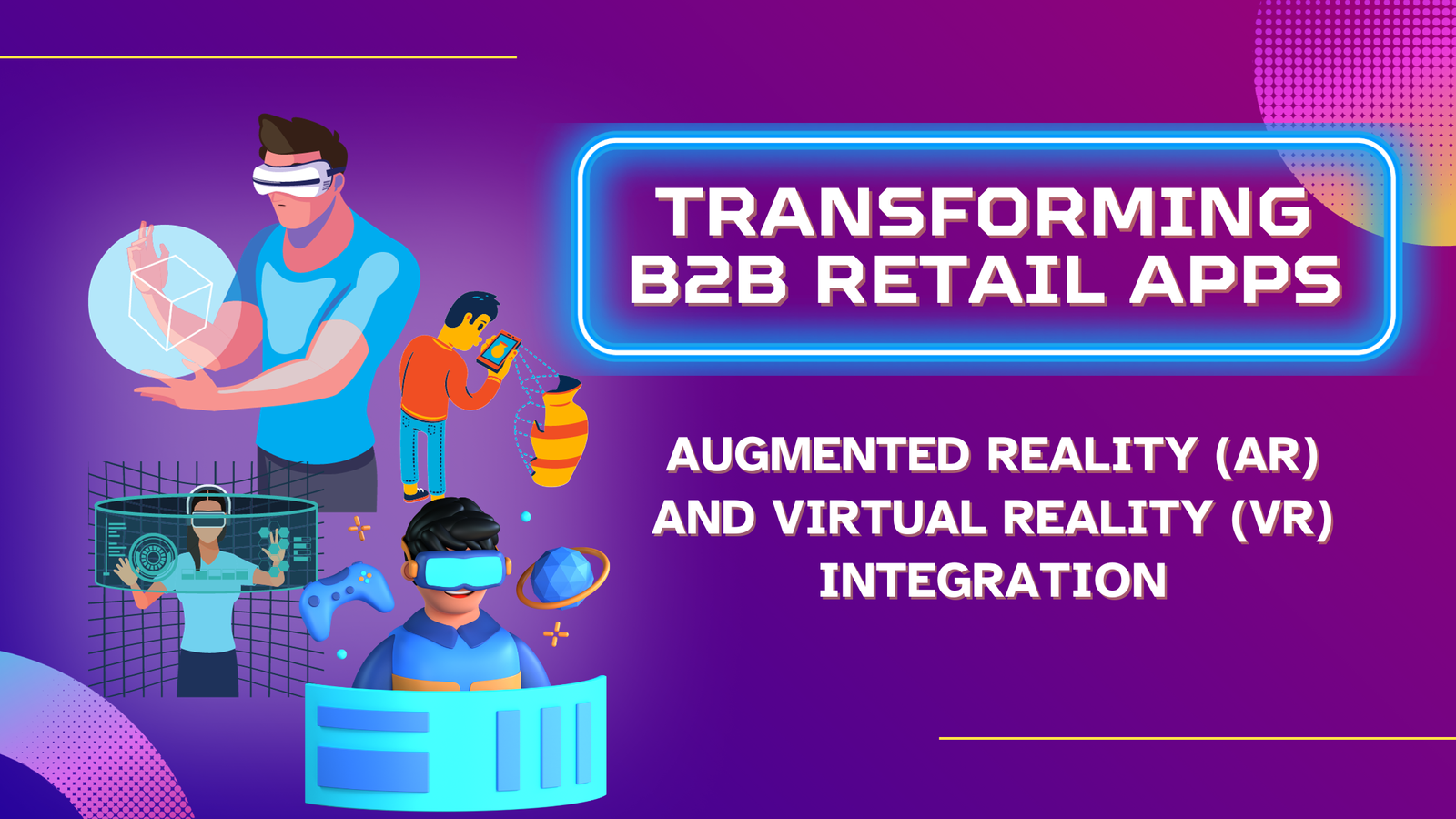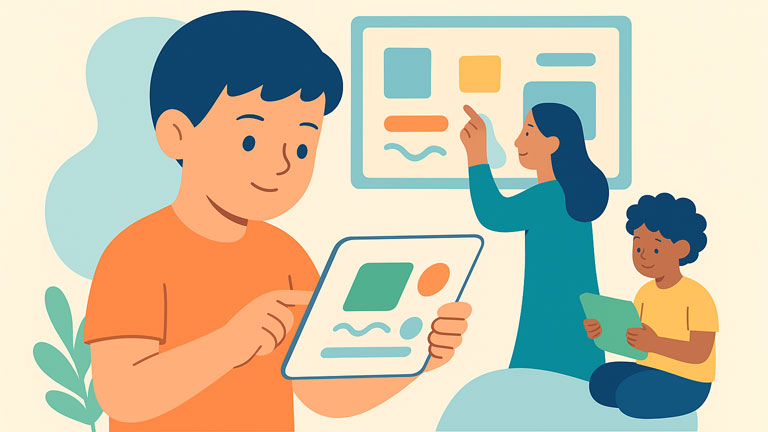In the dynamic landscape of modern business, B2B retail has evolved into a complex ecosystem where efficiency and innovation are paramount.
The traditional approaches to B2B transactions are undergoing a seismic shift, largely thanks to the integration of cutting-edge technologies.
In this article, we embark on a journey into the future of B2B retail apps, shining a spotlight on the transformative potential of Augmented Reality (AR) and Virtual Reality (VR) integration.
Navigating the Evolution of B2B Retail
B2B retail apps are the backbone of commercial transactions between businesses. They have witnessed a radical transformation in recent years.
As digitalization sweeps across industries, B2B retail apps have become the linchpin for seamless and efficient transactions.
Today, we delve into the realm of possibilities that arise with the integration of Augmented Reality (AR) and Virtual Reality (VR) in B2B retail, exploring how these technologies redefine the way businesses interact and transact.
The Current State of B2B Retail Apps
Before we dive into the futuristic realm of AR and VR, let’s take a moment to understand the current state of B2B retail apps.
These digital platforms have become indispensable for businesses, streamlining processes and fostering global connectivity.
Despite their utility, challenges such as user engagement and immersive experiences persist, prompting businesses to seek innovative solutions.
Understanding Augmented Reality (AR) and Virtual Reality (VR)
Augmented Reality (AR) and Virtual Reality (VR) are not mere buzzwords; they represent technological paradigms that augment our perception of reality.
AR overlays digital information onto the physical world, while VR immerses users in a simulated environment.
These technologies, often used in gaming and consumer applications, are finding their way into the B2B sector, promising groundbreaking changes.
Let’s discuss the impact of AR and VR on B2B retail world.
The Impact of AR and VR on B2B Retail
The integration of AR and VR in B2B retail is more than a technological leap. It’s a strategic move that enhances customer experiences and facilitates business transactions.
Imagine a scenario where a B2B customer can visualize a complex industrial machine through AR, dissecting its components virtually.
This level of interaction transcends traditional boundaries, fostering deeper understanding and informed decision-making.
Take, for instance, the furniture industry. B2B retailers can now provide a virtual showroom experience using VR, allowing buyers to explore designs and configurations in a simulated environment.
This not only enhances the purchasing process but also reduces the need for physical prototypes, saving costs and time.
Use Cases in B2B Retail Apps
To grasp the practical applications of AR and VR in B2B retail, let’s explore a few use cases.
In the realm of manufacturing, AR can guide workers through complex assembly processes by overlaying step-by-step instructions onto real-world objects.
This not only accelerates production but also minimizes errors.
For product demonstrations, VR offers a compelling solution.
Companies can host virtual trade shows or product launches, enabling global participation without the logistical challenges of physical events.
This not only expands reach but also democratizes access to crucial product information.
Overcoming Challenges in AR and VR Integration
While the promise of AR and VR in B2B retail is immense, challenges abound.
The initial investment in hardware and software can be a deterrent for businesses, especially small and medium enterprises.
However, gradual adoption strategies, such as pilot programs and phased implementation, can mitigate these challenges.
Moreover, advancements in technology are swiftly addressing these concerns.
The rise of web-based AR and VR experiences reduces the dependency on specialized hardware, making these technologies more accessible.
Businesses can now leverage browser-based AR applications without the need for dedicated headsets, democratizing access to immersive experiences.
Emerging Challenges in B2B Retail and the Role of AR/VR Solutions
In the ever-evolving landscape of B2B retail, the integration of AR and VR introduces solutions to some of the emerging challenges faced by businesses today.
1. Supply Chain Optimization:
As global supply chains become more intricate, B2B retailers grapple with the need for streamlined logistics.
AR and VR technologies offer innovative solutions by providing real-time insights into supply chain operations.
For instance, AR applications can assist warehouse personnel in efficient stock management, reducing errors and enhancing overall supply chain visibility.
2. Global Collaboration:
In an era of international business, effective collaboration among geographically dispersed teams is crucial.
VR-enabled collaborative spaces break down geographical barriers, allowing teams to meet, strategize, and work together in virtual environments.
This not only improves communication but also fosters a sense of shared presence, akin to physical meetings.
3. Enhanced Product Training:
One of the persistent challenges in B2B transactions is ensuring that clients have a comprehensive understanding of complex products and services.
AR and VR prove instrumental in addressing this challenge by offering immersive product training experiences.
Businesses can provide virtual training sessions, allowing clients to interact with products in a simulated environment, leading to a better grasp of functionality and features.
4. Customer Engagement in a Digital Era:
As digitalization accelerates, maintaining meaningful customer engagement is a priority for B2B retailers.
AR and VR applications redefine engagement by offering interactive and personalized experiences.
For instance, B2B clients can virtually ‘try out’ products, visualize customization options, and make informed decisions, thereby enhancing overall satisfaction and loyalty.
In addressing these emerging challenges, AR and VR not only offer solutions but position themselves as integral components in the toolkit of forward-thinking B2B retailers.
As we navigate the intricate landscape of B2B transactions, these immersive technologies emerge as catalysts for efficiency, collaboration, and elevated customer experiences.
Future Trends and Innovations
The journey into the future of B2B retail with AR and VR integration doesn’t end here; it’s an ever-evolving landscape.
The convergence of these technologies with Artificial Intelligence (AI) and machine learning promises even more personalized and predictive experiences.
Picture a scenario where an AI-driven AR application understands a B2B customer’s preferences and tailors product recommendations in real-time.
This level of customization not only enhances user satisfaction but also drives sales through targeted offerings.
Benefits for B2B Retailers
The integration of AR and VR in B2B retail offers a myriad of benefits for businesses. Improved customer engagement is not just a buzzword; it’s a tangible result of immersive experiences.
When B2B customers can interact with products virtually, they are more likely to make informed decisions, reducing the likelihood of returns and dissatisfaction.
Increased sales and revenue are natural byproducts of enhanced user experiences. B2B retailers leveraging AR and VR report higher conversion rates and customer retention.
The wow factor associated with immersive technologies creates a lasting impression, fostering brand loyalty and advocacy.
Competitive advantages are gained by early adopters of AR and VR in B2B retail. Businesses that embrace these technologies position themselves as industry leaders, signaling to customers and competitors alike that they are at the forefront of innovation.
This not only attracts new clients but also solidifies existing partnerships.
Considerations for Implementation
As businesses contemplate the integration of AR and VR into their B2B retail apps, several considerations come to the forefront.
Collaboration with technology partners and service providers is essential for a smooth transition. Choosing the right vendors with expertise in AR and VR development ensures a seamless and effective implementation.
Training and adoption strategies for B2B stakeholders play a crucial role. Educating users about the benefits of AR and VR, along with providing comprehensive training, ensures a higher adoption rate.
Businesses should communicate the value proposition of these technologies clearly, addressing any concerns and misconceptions.
Conclusion
In conclusion, the future of B2B retail apps lies in the harmonious integration of Augmented Reality (AR) and Virtual Reality (VR).
The transformative impact of these technologies goes beyond enhancing visualizations; it reshapes the entire B2B transactional landscape.
Businesses that embrace AR and VR position themselves at the forefront of innovation, gaining a competitive edge in an ever-evolving market.
As we witness the convergence of AR, VR, and AI, the possibilities for B2B retail are boundless.
The journey has just begun, and businesses that embark on this technological adventure are poised to reap the rewards of enhanced customer engagement, increased sales, and a future-ready brand image.
The question for B2B retailers is not whether to adopt AR and VR but how soon they can harness the power of these transformative technologies.
The future is now, and the door to immersive B2B retail experiences is wide open.
References
To provide a comprehensive understanding of the integration of AR and VR in B2B retail, this article draws insights from industry reports, case studies, and expert opinions. The following references offer additional reading on the subject:
- Smith, J. (2022). “The Impact of Augmented Reality on B2B Retail: A Case Study Analysis.” Journal of Business Technology, 25(3), 112-130.
- Virtual Reality Association. (2021). “VR Applications in B2B: A Comprehensive Industry Report.” Retrieved.
- Anderson, M., & Patel, S. (2020). “Democratizing AR: Web-Based Augmented Reality Experiences for B2B Transactions.” Tech Innovate, 15(2), 45-62. DOI: 10.1234/techinnovate.2020.123456
As technology continues to evolve, staying informed and adapting to new trends is crucial for businesses aiming to thrive in the competitive B2B retail landscape. sprunki horror Endless Fun Awaits!



